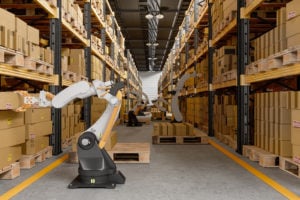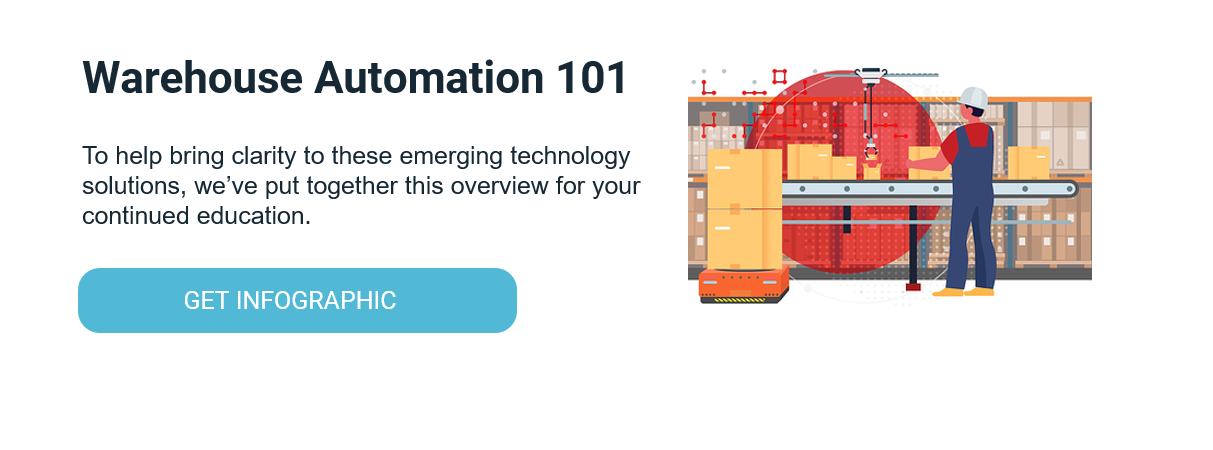Warehouse Automation Challenges Uncovered at MODEX 2022

It was a great experience being back in the Tecsys booth at MODEX 2022 in Atlanta, Georgia. After two years, I was invigorated by attending an in-person event again and being surrounded by so many supply chain nerds like myself. Without a doubt, automation took center stage at MODEX 2022 and because of that, I couldn’t help but observe a few warehouse automation challenges that are brewing.
The MODEX 2022 exhibit hall was not short on the amount of automation vendors and system integrators (SIs) offering to design and build the perfect automation solution for warehouse management. And while this is exciting for warehouse managers, I think it’s important to take a moment to cut through the hype. In my conversations with the automation vendors and SIs, I learned there is a crisis coming in the world of warehouse automation and it’s on track to create potential problems for the early adopters.
My intent in writing this blog is not to deter you from adopting automation in your warehouse, but just make you aware of some potential growing pains. Therefore, let’s examine the current warehouse automation challenges and how these may impact your strategy and implementation plans.
4 Current Warehouse Automation Challenges
1. Supply Chain Shortages Up
Supply chain shortages continue to be a national issue, therefore, it’s also a warehouse automation challenge. Particularly, chip availability as well as steel and other raw materials are causing major delivery problems for automation vendors. More than one system integrator I talked to said they are having to be highly selective on which prospective customers to work with since they are probably 24 months out from being able to deliver on an automation solution.
2. Hardware Vendor Saturation and Pricing Down
Another warehouse automation challenge I noticed at MODEX 2022 was the huge proliferation of automation hardware vendors (many I found to be highly leveraged). My concern is most of these startups simply will not survive over the long term. Because this space is becoming more competitive — especially from copycat brands in China — it is pushing automation hardware pricing downwards. This might sound good from a purchase perspective, but it is starting to create super tight margins for AMR or collaborative robot vendors. As a result, these hardware vendors might be forced to reduce their investment in R&D, which they desperately need to mature their products into reliable and valuable solutions.
3. Greater Mixture of Automation Technologies
Along with these market pressures, there is a greater variety of automation technologies to choose from — each with unique capabilities and functions. As a result, there is an increasing realization from warehouse managers that one type of automation only solves one area of the warehouse. A warehouse can invest in AMR to help address labor picking challenges, but how does that fit with the long-term warehousing strategy? Today’s labor shortages might only be a finite issue. Leveraging automation to compete with tomorrow’s supply chain needs is an infinite issue. Therefore, organizations need to determine what types of automation technologies are needed now and into the future. Not only that, but how will these different automation technologies co-exist? Will customers have to stick to automation from only one vendor? Let’s face it, multiple automation vendors co-existing in a warehouse is not in the interest of any vendor. That’s a warehouse automation challenge that the industry will have to figure out. My prediction is we will have to come to a point where two systems from two separate vendors can work harmoniously side by side.
4. Hardware Vendors Expanding Their Solution Offerings
One of the final warehouse automation challenges I observed at MODEX 2022 was more automation hardware vendors wanting to grow into warehouse software providers. I imagine this is probably because hardware is so easily copied and the margins are becoming so heavily eroded, some of these vendors are expanding their offering into the warehouse management system (WMS), warehouse execution system (WES) and warehouse control system (WCS) space. In my opinion, this transition will be a difficult one. It’s very hard for a hardware vendor to become a software solutions provider because the disciplines and areas of expertise are vastly different. Essentially these companies are reinventing themselves and starting a whole different type of business while keeping their existing one going. It’s very risky and has a high potential for failure of keeping both operating successfully.
Most automation projects must fit into an existing WMS. If the automation also offers WMS functionality, then how will those systems work together collaboratively? If the automation solution does manage to effectively duplicate WMS functions, will your WMS vendor work hard to help integrate into a system that is potentially a competitor?
Final Thoughts
For me, the clearest revelation from MODEX 2022 was that automation is here to stay, but there will be warehouse automation challenges ahead — both for the vendor and the customer.
On the vendor side, I anticipate closures, acquisitions, consolidation and realignments in the warehouse automation space. On the customer side, if you are considering warehouse automation, I encourage you to select your vendor carefully. Make sure you balance your short-term needs (labor constraints) with your long-term goals around automation. Avoid the temptation to jump on the automation bandwagon to solve your near-term pains without having a well-thought-out plan for your long-term automation strategy. I don’t want to see you get caught in the fallout of this coming automation marketplace crisis.




